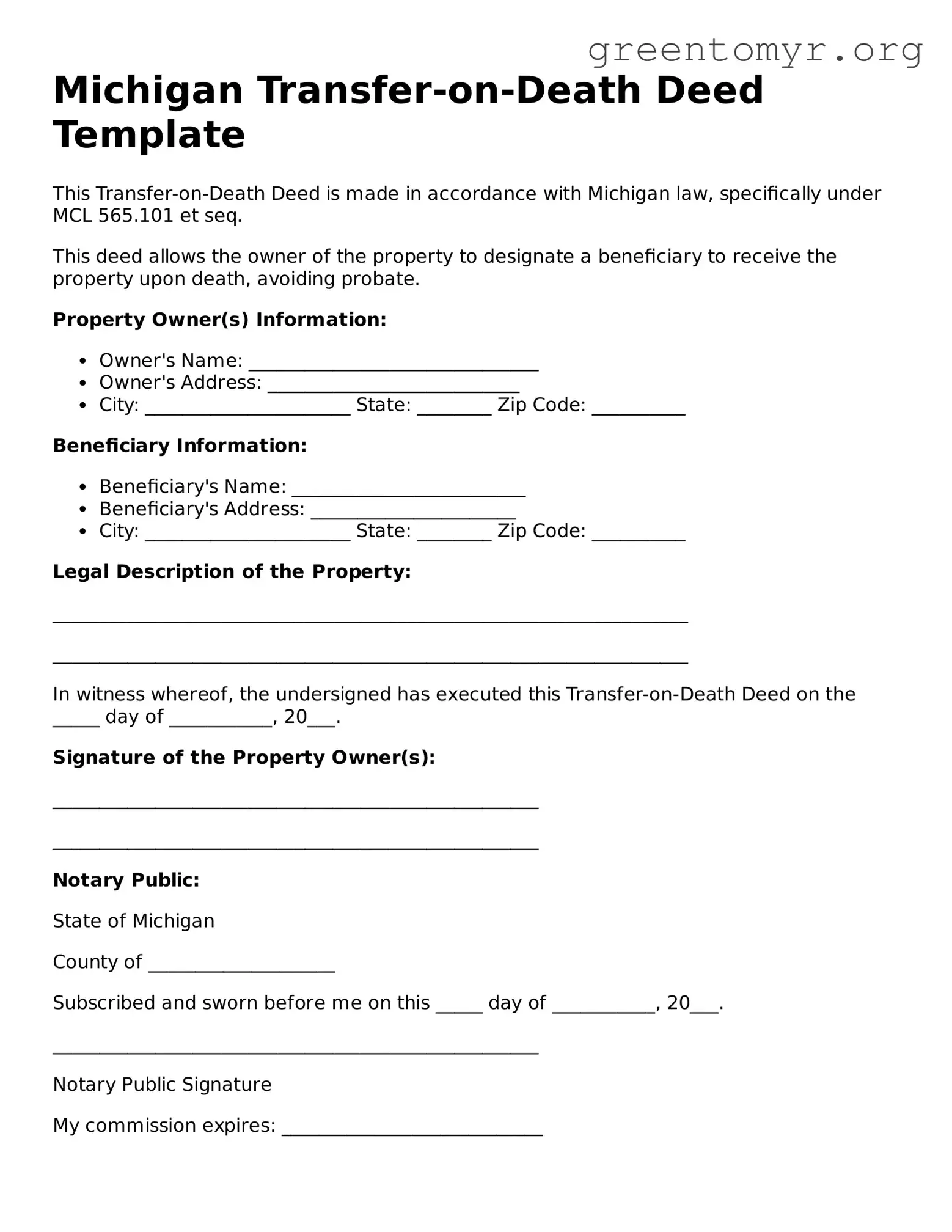Michigan Transfer-on-Death Deed Template
This Transfer-on-Death Deed is made in accordance with Michigan law, specifically under MCL 565.101 et seq.
This deed allows the owner of the property to designate a beneficiary to receive the property upon death, avoiding probate.
Property Owner(s) Information:
- Owner's Name: _______________________________
- Owner's Address: ___________________________
- City: ______________________ State: ________ Zip Code: __________
Beneficiary Information:
- Beneficiary's Name: _________________________
- Beneficiary's Address: ______________________
- City: ______________________ State: ________ Zip Code: __________
Legal Description of the Property:
____________________________________________________________________
____________________________________________________________________
In witness whereof, the undersigned has executed this Transfer-on-Death Deed on the _____ day of ___________, 20___.
Signature of the Property Owner(s):
____________________________________________________
____________________________________________________
Notary Public:
State of Michigan
County of ____________________
Subscribed and sworn before me on this _____ day of ___________, 20___.
____________________________________________________
Notary Public Signature
My commission expires: ____________________________
